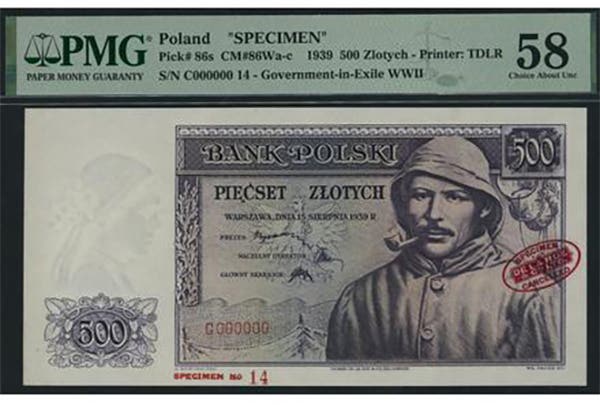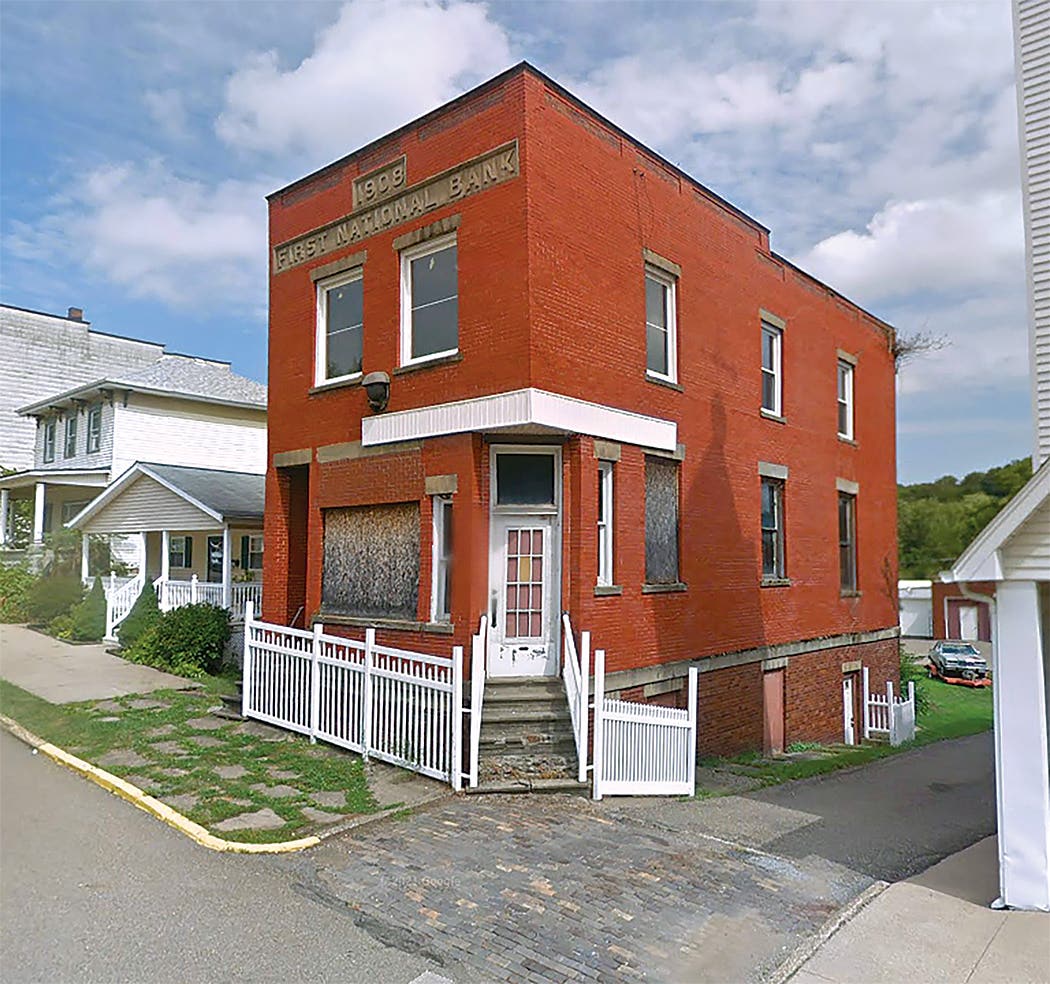Dust Bowl legacy in Dalhart, Texas
By Mark Hotz Back in 2013, I watched the Ken Burns documentary, “The Dust Bowl,” on our local PBS station, WMPT. As a historian, I knew about the Dust Bowl…
By Mark Hotz
Back in 2013, I watched the Ken Burns documentary, “The Dust Bowl,” on our local PBS station, WMPT. As a historian, I knew about the Dust Bowl and the disaster it caused on the American prairie, but Burns’ documentary really put it in perspective. The images of rolling black clouds of dust engulfing small Midwest towns really impressed me. I thought about the national banks involved and how dear money must have been in those days. I started looking into the areas hardest hit by the Dust Bowl in order to pick up a “Dust Bowl National Bank Note.” I settled on one from Dalhart, Texas.
Dalhart is the only town of any size in the very northwest part of the Texas panhandle. It sits at the junction US Highways 87 and 54, about 30 miles south of the Oklahoma state line. It straddles the borders of Dallam and Hartley counties, and is the seat of Dallam County. Although many think of the Dust Bowl as mainly affecting Oklahoma, the Texas panhandle was very hard hit, with much of the damage centering on Dalhart.
The original settlement was platted early in 1901 by W.J. Blair and Charles W. Thornton when the Chicago, Rock Island and Pacific Railway built west from Liberal, Kan., and crossed the Fort Worth and Denver City Line. Later the settlement was named Denrock, a combination of the names of the two railroads.
In 1901 Robert B. Edgell named his new newspaper the Denrock Sun. But when postal authorities objected, the town adopted the name Dalhart, combining the first syllables of the names of the two counties in which it is located. On June 11, 1901, Ora D. Atkinson and other promoters incorporated the Dalhart Town Co., and the first and only sale of lots was held on July 20.
Dalhart was incorporated as a town on May 6, 1902, and as a city on April 6, 1904. From that time on, Dalhart quickly grew as a shipping center for the XIT Ranch and other area ranches.
By 1912, Dalhart had a population of 3,500. The two railroad lines, which erected machine shops, roundhouses, and a lever control tower, contributed to the town’s prosperity, and Dalhart played a major role in establishing the Enid, Ochiltree and Western and other small railways. In addition, it had three banks, a flour mill, a large grain elevator, a planing mill, a modern utilities system, a hospital, an ice plant, several hotels and churches, and a high school athletic program serving an ever-expanding agricultural area. When oil companies began drilling in the Texas Panhandle, Dalhart was among the first towns to sell oil leases.
During the drought years of the 1930s, Dalhart was notorious for its “black dusters.” R.S. (Uncle Dick) Coon, a wealthy businessman who owned the DeSoto Hotel, became legendary for his generosity to depression-stricken farmers and cowboys. In August 1934, Dalhart became the site of one of the first three erosion-control demonstration projects in Texas, sponsored by the federal land bank, and the first to be devoted specifically to wind erosion.
The aforementioned XIT Ranch played a big part in Dalhart’s growth. When the Texas State Capitol building in Austin was destroyed by fire in 1881, the need for a new and expensive one became urgent. In 1882, in a special legislative session, the 17th Texas Legislature struck a bargain with Charles B. and John V. Farwell of Chicago, under which a syndicate led by the Farwells, with mostly British investors, agreed to build a new Texas State Capitol in Austin and to accept the 3,000,000 acres of Panhandle land as payment. The ranch stretched across all or portions of ten different counties.
The ranch started operations in 1885, and at its peak averaged handling 150,000 head of cattle within its 1,500 miles of fencing. The ranch also erected 325 windmills and 100 dams across its land. It covered portions of 10 counties, which apparently helped perpetuate the myth that the brand XIT stands for “Ten in Texas.” The brand was in fact created to thwart rustlers.
In 1901, the syndicate that owned the ranch began selling off the land to pay foreign investors as the bonds became due. By 1905, most of the land was subdivided, with large tracts being sold to other cattlemen and small amounts of land being sold to farmers. The last of the XIT cattle were sold on Nov. 1, 1912, and sales subsequently increased.
Dalhart was the only note-issuing town during the Dust Bowl in all of the six counties making up the northwest corner of the Panhandle. Of those six counties, only two towns had national banks, with Stratford in next door Sherman County having one bank that liquidated in 1913, with just a single note known, making it unrelated to the Dust Bowl and basically uncollectible in any event.
The First National Bank of Dalhart opened in 1903 and received charter 6752. It was the largest bank in the Panhandle and issued a variety of Series of 1902 and 1929 notes until it was closed by the receiver at the end of June 1934. It had a total issue of almost $1.2 million and it was the only local bank to issue small-size notes, making its notes the ones that would have circulated in the area during the Dust Bowl. Quite a few notes are reported from this bank, with around 10 large and nearly 20 small known.
After it closed in 1934, it was immediately reorganized as the First National Bank in Dalhart, charter 14199, and continued to issue Series of 1929 Type 2 notes until the end of the national currency era. Just four of these are reported.
Dalhart also had a second bank, the Dalhart National, which opened at the beginning of 1905 but liquidated in 1912, making its notes rather rare and at the same time unrelated to the Dust Bowl. It had a very small issue of just $87,000, and its circulation was taken over by the First National Bank when it closed in 1912. Just a single note, a Series of 1902 Red Seal is known.
Dalhart today is a town of nearly 8,000 residents. The old downtown, which stretches along Denrock avenue, is dominated by the Dallam County Courthouse. Across from the courthouse is the XIT Museum, which houses a vast collection of artifacts related to the XIT Ranch and other areas of Dallam County history. The First National Bank was located in the Felton Block, which also housed the Felton Opera House and offices. I have included a postcard view of this building circa 1915. Today, the building still stands, though largely bricked off, and houses a book store.
Though many of Dalhart’s old structures still remain, many others were damaged by tornados and other calamities and torn down. Such was the fate of the old Dalhart National Bank building, which no longer stands in town.
Dalhart’s place in the epicenter of the Dust Bowl makes my Dalhart small-size note special to me. I like to think who might have handled it during those very difficult economic times. As a reminder of the Dust Bowl, I have included a vintage photo, commissioned by the U.S. Government at the time, showing an abandoned farm covered in dust and dirt, just north of Dalhart.
Readers may address questions or comments about this article or National Bank Notes in general to Mark Hotz directly by email at markbhotz@aol.com.
This article was originally printed in Bank Note Reporter. >> Subscribe today.
More Collecting Resources
• The Standard Catalog of United States Paper Money is the only annual guide that provides complete coverage of U.S. currency with today’s market prices.
• If you enjoy reading about what inspires coin designs, you'll want to check out Fascinating Facts, Mysteries & Myths about U.S. Coins.








